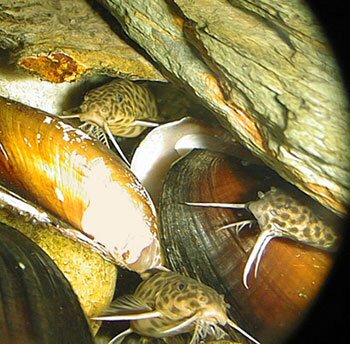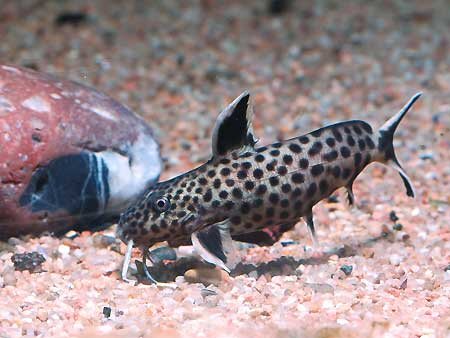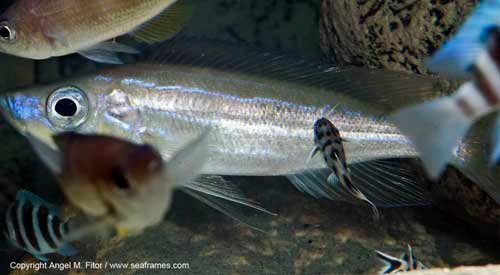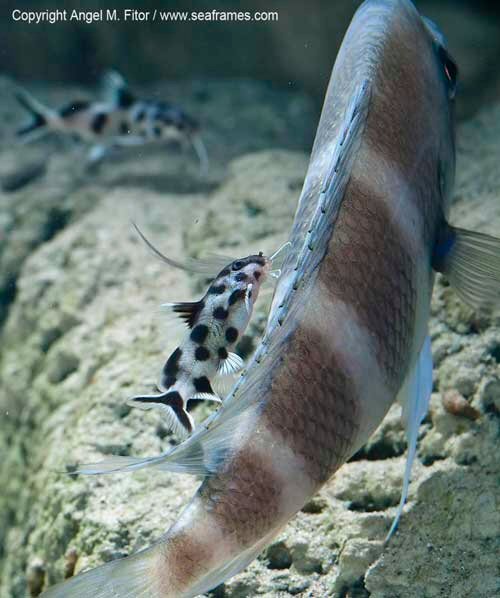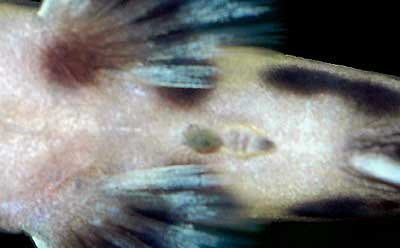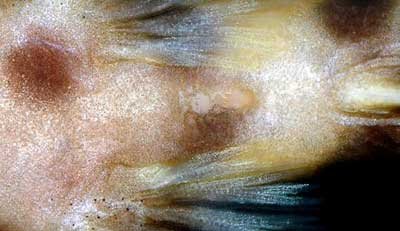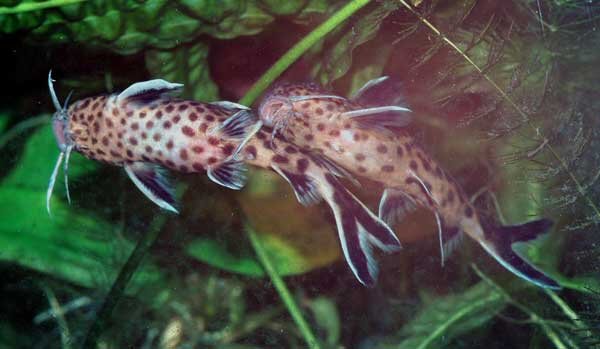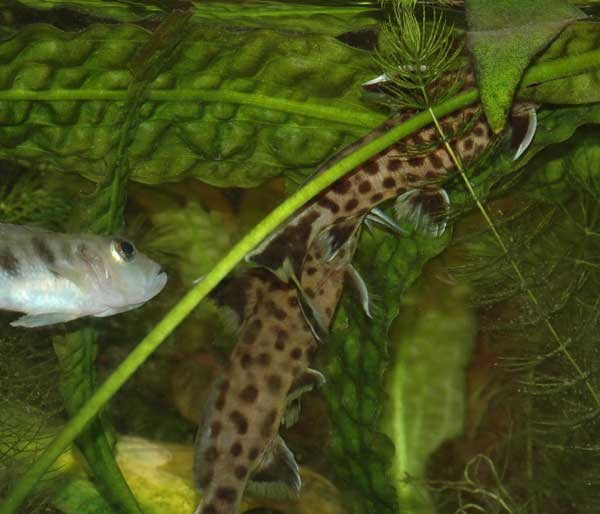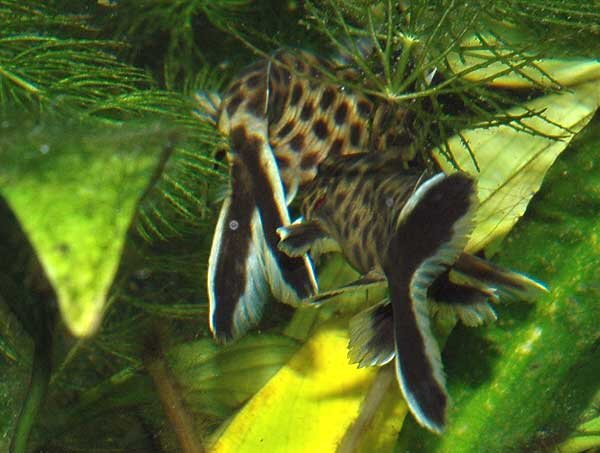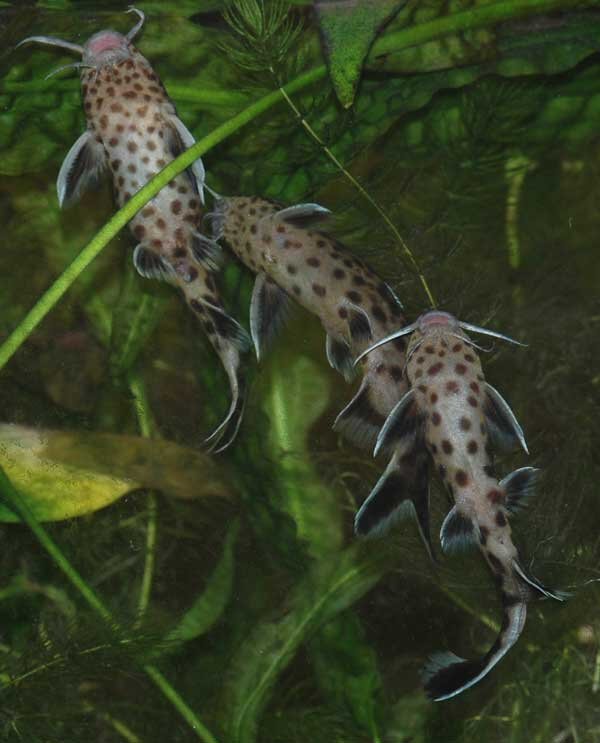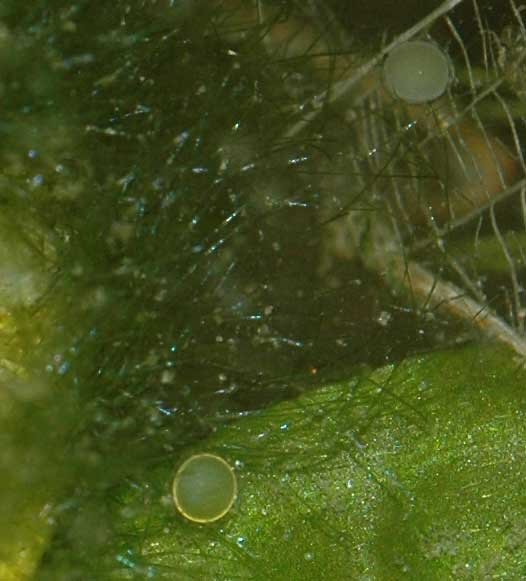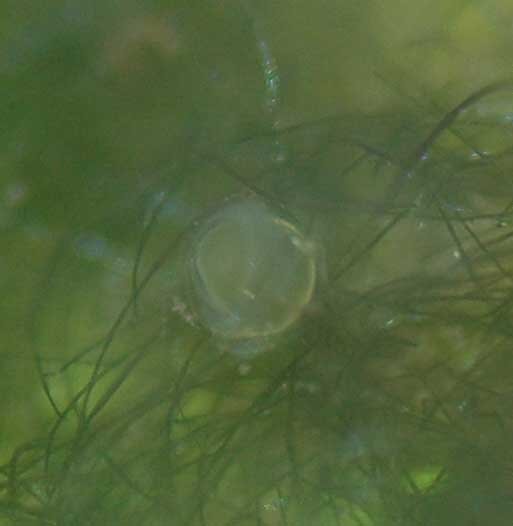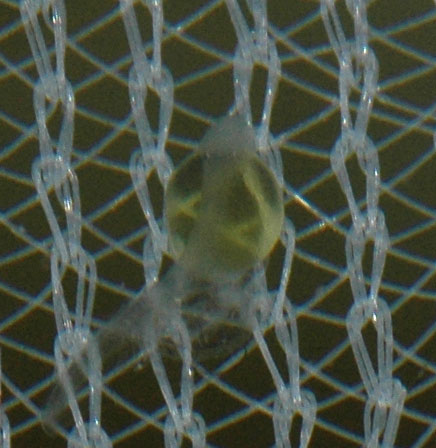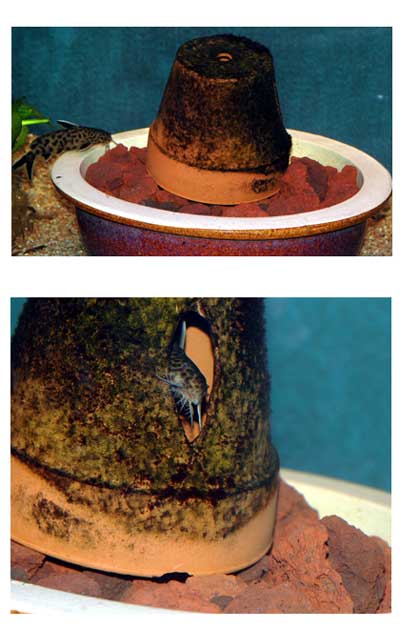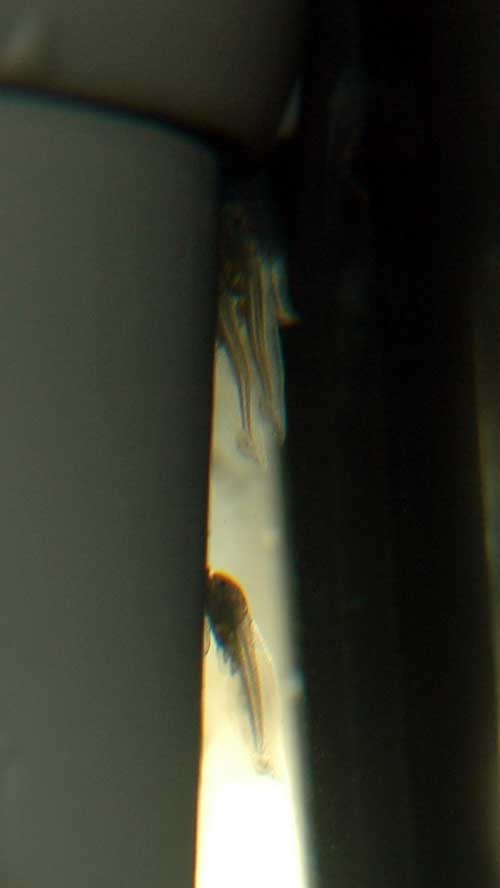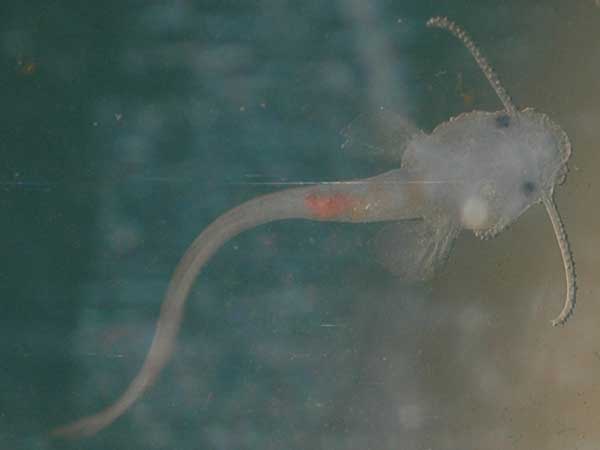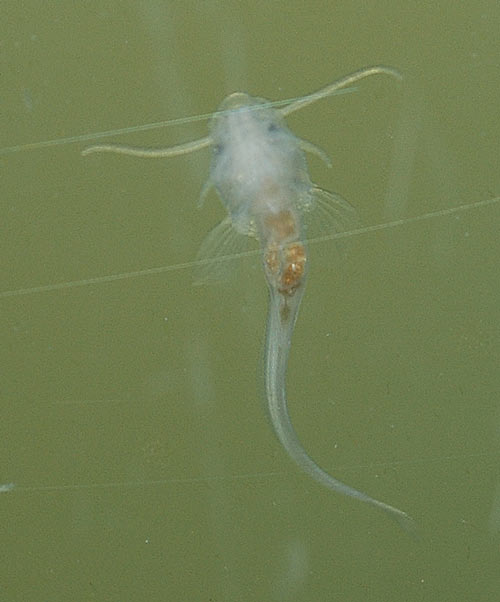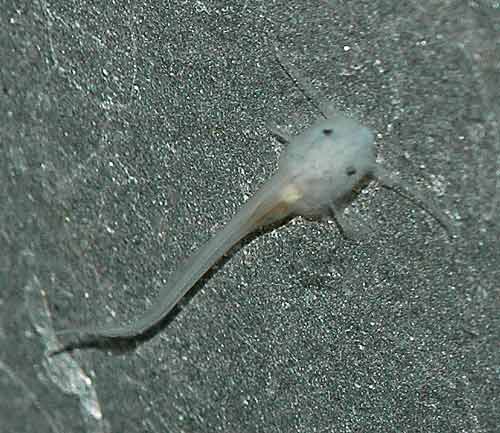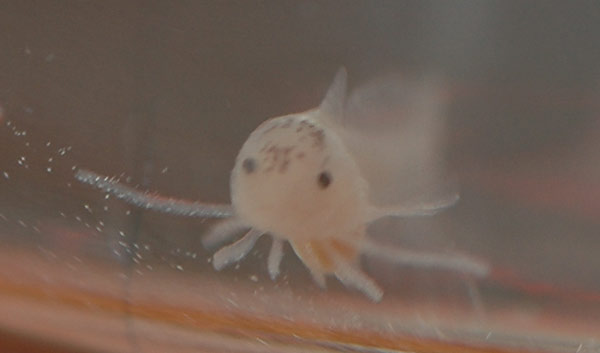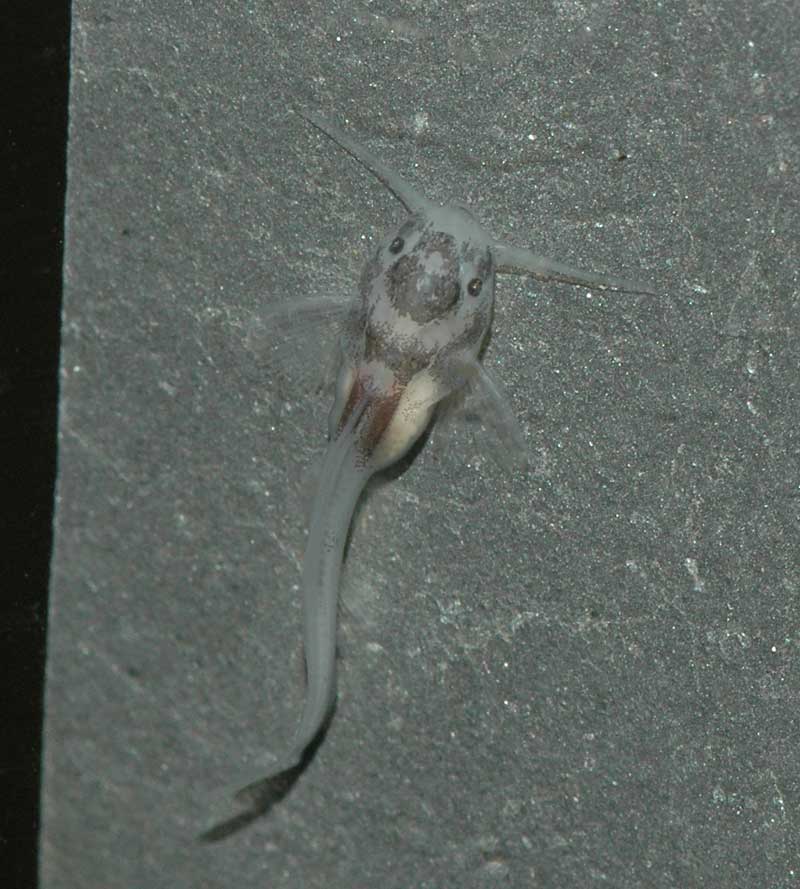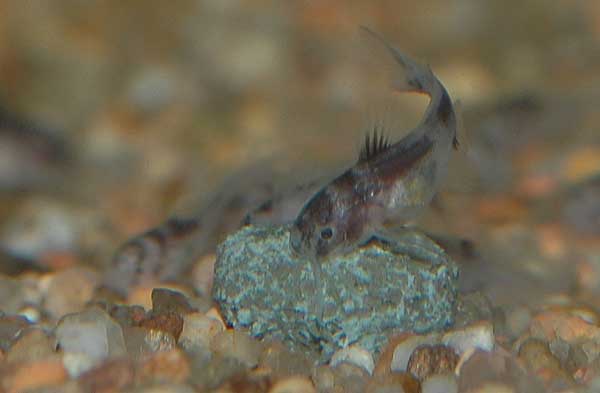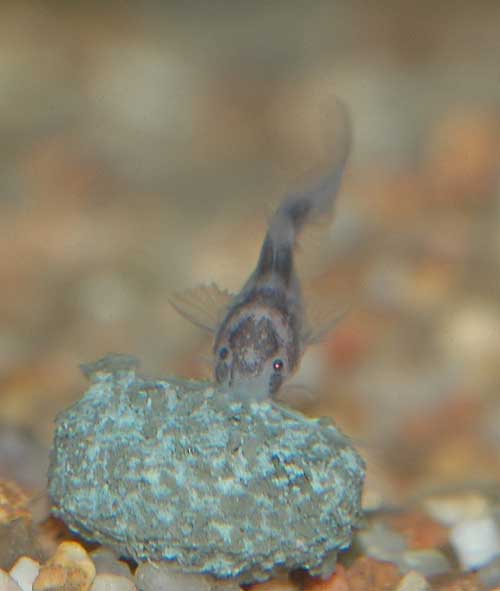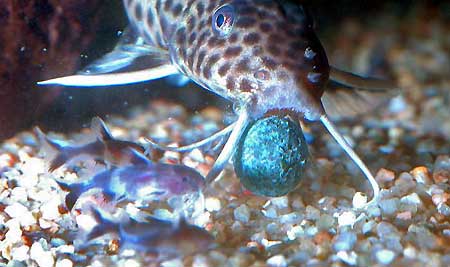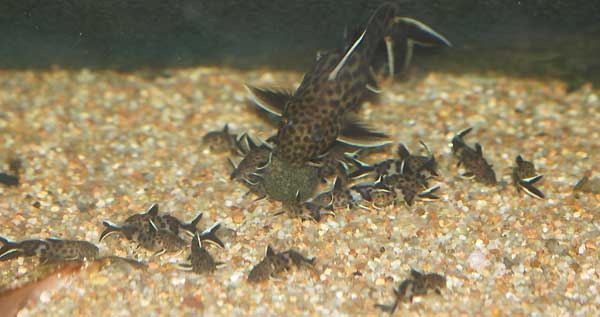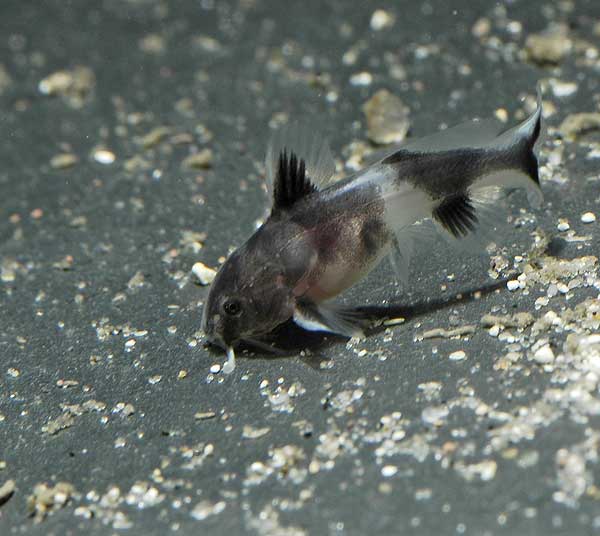SCOTCAT.COM
your internet guide to all things catfish
| Synodontis lucipinnis (formerly Synodontis Petricola "dwarf") |
by Benoît Jonas |
One of the main keys to differentiate the species is the shape of the mouth and the implementation of the barbels, then comes the humeral process (skull ossification)
Fish subservient to the rocky environment, slipping into cracks and flaws, and it may be difficult to observe. Adults dorsal and pectoral fins are equipped with a hard radius and "barbed wire" that repels any fish trying to capture him. By observing young ingestion attempts by Neolamprologus savoryi, and Altolamprologus fasciatus, I noticed the inconvenience caused by these attempts, and it is possible that they secrete a toxic venom. Whenever I could follow such a scene, the predator spit off again quickly the Synodontis and spitting / chewing like he was bothered by any corrosive, and for a few minutes (another "catfish" of Tanganyika Lophiobagrus cyclurus is deemed "toxic").
Group interactions and sociability of the species is expressed only if we maintain a group of at least 4/5 individuals as permanent or almost two or more numbers important, they do not stop. But only if they are in an aquarium with roommates they are quiet, small and slightly aggressive, otherwise they come out at night or "coup wind" during food distributions.
If you can develop their specific aquarium will be even better, it should be at least 150L for 6 specimens from 5/7 cm (about 3/4 years). It must provide shaded cavities, scree stones, piles of bivalve shells (freshwater mussels - Anodonta cygnaea -) When the fish feels at ease, it is not rare to see in open water (if there is some water power that's fine), the "nose to the wind", seeming to hover on the same site and in this position the flicking of the tail; so it looks like a small shark fin and pectoral prepared. Sometimes side by side, sometimes one after the other, it may well take several minutes if nothing and no one bothers them. Then the ride takes them round the aquarium, sometimes calm, sometimes nervous, they get injured very rarely, females can sometimes attack the end of the backbone of a male. Synodontis lucipinnis is unique, it can be cleaner, not a floor cleaner, but a fish cleaner. Several times I was able to see who was cleaning a Chalinochromis brichardi that a Altolamprologus calvus, or Telmatochromis vittatus. The first time I could ask me if it was a coincidence but the repetition has not left some doubts for a very long time. Slowly approaching the fish, Synodontis hops on and starts working, it is easy on the mucus obviously if it goes too far, that is too much for the fish, cleaning goes further to a gust of tail until the next approach of the Synodontis. No "dance" approach here, as can the Bluestreak cleaner wrasse (cleaner wrasse) or young Pomacanthus do just a slow approach and smoothly. This cleaning is still superficial, and there is no question of going clean the inside of an oral cavity (although with some very large species in the lake this could be possible -but not extrapolate too much from this side there.) Any observation in this direction can come to increase this remark, so if you have witnessed similar events, feel free to contact me.
Young Synodontis polli a cleaner Cyphotilapia gibberosa (Author Angel M. Fitor)
Reproduction: So they laid eggs, and some other small fry were discovered by chance during the months that followed. Following a move, it was possible to observe a nesting in a community tank. Here I leave the pen to Estelle who will describe what we have seen twice. Benoit and I maintain thirteen specimens of Synodontis which we acquired as the sp. petricola "dwarf". In the group, there was some beautiful adults, who have already played without having observed spawning (but 3 of their fry were rescued).
.
Profile, we see an appendix directed backwards
Sexual dimorphism of this species becomes evident after the first reproduction. Females are plump and have a well rounded belly. It is also possible to distinguish gender by examining the genital papillae of the male:
The female: Broad and oval papilla, inflated during the breeding season
In recent days, the adult female had a huge abdomen, and last night we had the chance to attend the parades and the spawning of the couple. First the male begins to pursue the female across the tank, constantly tickling his belly with his barbels and pushing with his head.
The Synodontis are currently in tank with virtually no decor, we camped out in the the fishroom. They chose a tangled mass of floating plants like egg holder, under the interested eye of a small Variabilichromis and female N. hecqui who are well entertained. It really is the sport for photographers to get one or two usable photos.
At the heart of the plants, the couple begins to turn on itself and then stops for a moment. Both fish wrap, forming a circle, and the female then expels some eggs.
Look closely, we see 3 eggs in this picture
When they separate, the female leaves then spins, shakes with spasms that took him to the other side of the tank, then the male joins in. They go for a swim together and go again into the plants. At one point, the second male comes briefly to join the party.
Finally, most of the eggs were eaten by the two gluttons who followed the scene closely, only a few remained "glued" to the plants, and we hope to follow their evolution.
Now we follow the development from egg to adult form, through the larval stage. In this picture we guess the larva still coiled around the yolk, just before the outbreak, about 30 hours after spawning at 25° eggs hatch in 48 hours.
The larvae are hatched, its size does not exceed 2/3 mm, it wriggles continuously, it is aged about 5 hours
The sequence of photographs was made in a specific tank, set up especially to follow closely the reproduction and growth of larvae and fry. Here is the site as it was laid out. We clearly see the opening on the side of the flower pot, which sits on pozzolan chips, non-adhesive eggs (or maybe slightly) infiltrating there during spawning.
Resorption of the yolk takes about 5 days, the freestyle reaches 6, the larvae begin to clump in dark corners
During the night phase, they seem much more active, and the previous photo was made with luck. This little "comma" wriggling in front of the front window, the focus was made "haphazardly". We come to distinguish the sensory cells on the barbs as small warts, it measures only 3 mm.
A week after ... sorry for the scratches, but are invisible to the naked eye
Caudal forming and the long adipose fin
Front view
After 15 days it has the character of a small catfish. Long back, abdomen short, long barbels, pigmentation extends
Then quickly things are changing. Three days after the previous one, in a series of shots, they finally look like their parents
Feeding session on a spirulina tablet (they measure 5/6 mm)
This little world has been raised with the adult trio, they avoided in a reflex contact with the larvae and young, no predation by the adults were observed.
Their growth is extremely slow and you have to arm yourself with patience to find one day a small fish swimming lively between the stones, or settling, if it has not been a victim of predation in the aquarium.
In light of all the observations we made, highlighting egg size (just 1 mm in length) and the slow growth, it is clear that this species can act as a "cuckoo" in Lake Tanganyika, as grandiops Synodontis (incorrectly called S. multipunctatus) Conclusion: For larvae, no food that moves, very fine particles, especially for the start, then the fry begin to feast on algae, adults with a feel for Biological cover rocks (in any aquarium case).
|
If you would like to contribute an article, please e-mail me. You will of course be credited for your work.
If you would like to donate any denomination of money to the site just click the above link button. All proceeds will go to running the site and hopefully to keep it going for a few years yet.
Print or e-mail this article below

